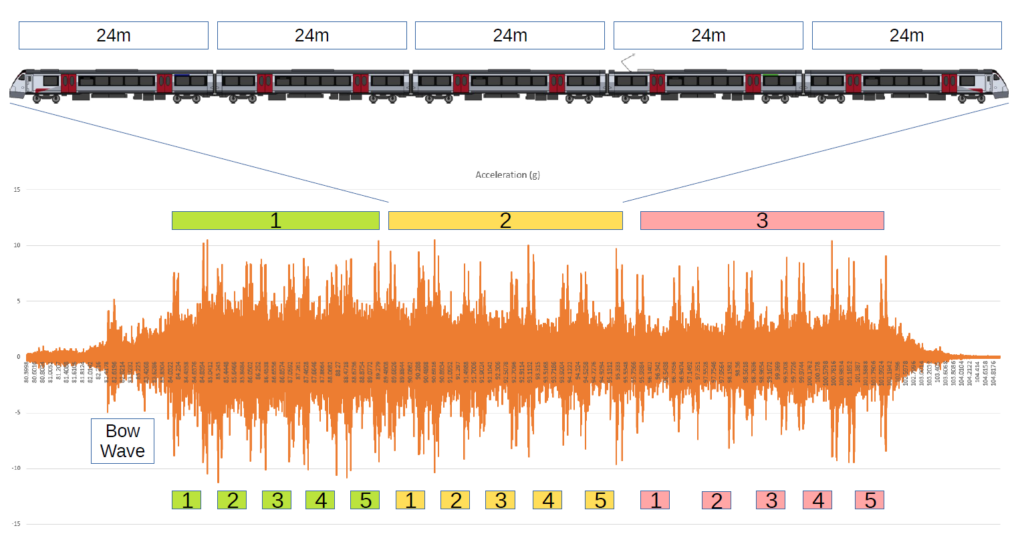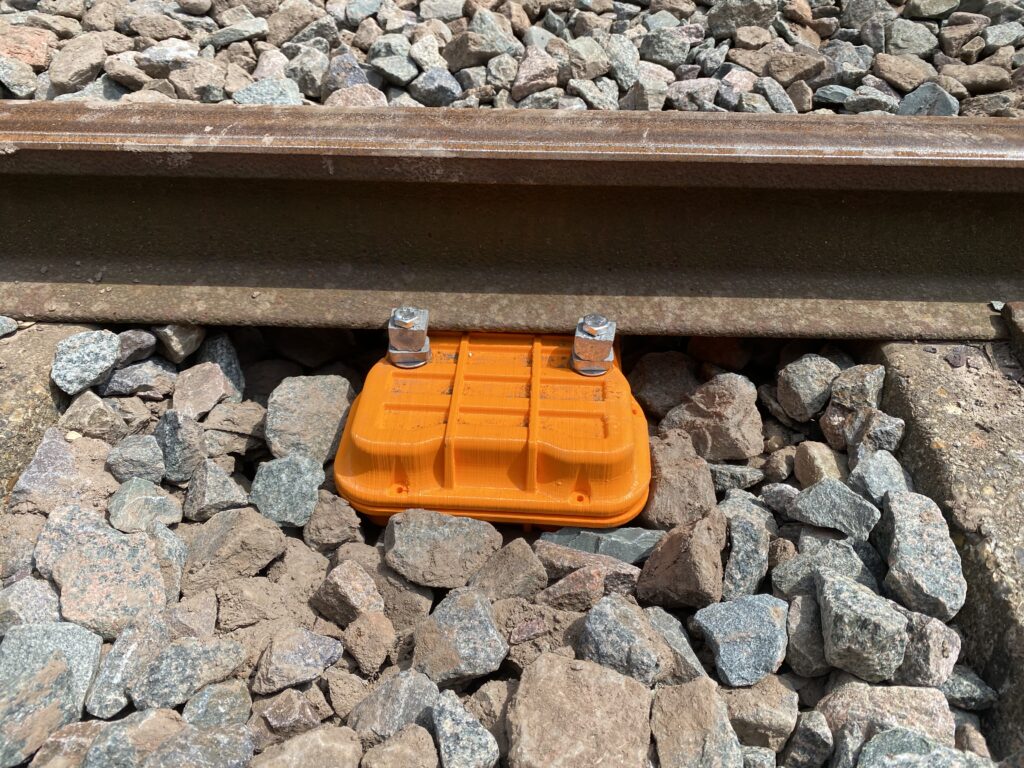Intelligent infrastructure and remote condition monitoring systems are now essential tools for the efficient and cost-effective maintenance and asset management of all types of railway infrastructure.
No matter what an asset is or how well it is made, the asset will show signs of degradation over time. Depending on the type of asset, how it is used, and what elements fail first, the signs of degradation will appear differently. The changes may be so subtle that it is difficult to initiate an intervention until it is too late, so the asset fails or gives rise to a hazard.

However, intelligent connected infrastructure and remote condition monitoring can provide information on how an asset is changing over time, and allow an intervention to take place before a failure or hazard occurs. To achieve this requires a reliable sensing device and a data connection, and the sensing device and associated data transmitter will need a power supply. Given that the main line railway in Great Britain is 15,935km (9902 miles) long, providing a power supply to support a remote sensing device can be tricky.
Many existing remote sensors are battery powered. However, battery life is affected by many factors including the energy capacity stored, current drawn, operational time, the battery’s discharge characteristics, and environmental conditions, but can be typically two or three years or less for frequent monitoring. With potentially thousands of sensors needed for comprehensive railway monitoring this is not a sustainable solution. Battery replacement will be required at some point, which can come around quickly, and many batteries may need changing at the same time.
From an environmental perspective, replacing and recycling batteries should be avoided. They contain hazardous substances and, if not correctly disposed of, can cause health issues. Even when correctly disposed, environmental risks can persist for some battery types as their recycling processes are not ideal. Handling batteries also requires care. For example, lithium batteries can explode or catch fire if punctured or are short-circuited. Battery replacements can be costly and resource hungry, and every visit to a railway asset is a safety risk which should be avoided if at all possible.
Electromagnetic energy harvesting
A solution to this problem is being developed by Encortec Ltd, in collaboration with Network Rail and Unipart Rail, for its electromagnetic energy harvesting technology to deliver sufficient usable power for its intelligent wireless sensors. The development is part funded by an Innovate UK Smart Grant.
Innovate UK, part of UK Research and Innovation says the funding is to: “support SMEs and their partners to develop the disruptive innovation with potential for rapid economic return to the UK.” It offers funding that is “business focused, with deliverable, realistic, adequately resourced plans to achieve return on investment, growth and market share following project completion.”
Encortec’s vision is to remove the barriers to providing electrical power and to provide ‘fit and forget’ energy harvesting powered technology for asset condition monitoring and effective maintenance. This will remove the requirement to charge and replace batteries, and the need to use power cables connected to the mains for sensors.

The energy harvesting technology was instigated from research undertaken by the University of Exeter and one of the outputs of the research identified using electromagnetic flux energy of a 25kV AC electrified railway for energy harvesting to provide power for ‘fit and forget’ sensors.
Electrified rail track energy harvesting uses the principle of the coupling of magnetic field lines created by the return electric current of an AC electrified railway in the rail by passing trains, to power the Encortec energy harvesting rail sensors. The electrical energy harvested is in the order of 0.25W – 4.0W, which is sufficient to transmit >2048 data bits per second using Industrial Internet of Things (IIoT) Low-Power, Wide-Area (LPWA) communications to monitor asset changes.
Communications for the sensor is currently being developed to use Vodafone’s Narrowband Internet of Things (NB-IoT) LPWA network using licensed and secured spectrum. This is a reserved channel on the Vodafone LTE network designed to connect assets such as vehicles, cameras, traffic lights and environment sensors. The service, offering enhanced capability such as enhanced coverage penetration for connectivity in remote or underground location, has been optimised to handle small data messages, with low power consumption and for large-scale deployments, such as the Encortec energy harvesting rail sensors. Encortec is also looking at other communication options for its sensor, such as low orbit satellite communications.
Reducing climate change risk
Two of the biggest risks to railway operational reliability are flooding and excessive rail temperatures, and with climate change these two risks are only going to increase. This is why Encortec has initially focused its wireless ‘fit and forget’ sensor to monitor rail temperature, vibration, and flooding. The sensor device can be easily fitted underneath a rail in minutes, anywhere on an AC electrified railway, with no special training required.
The sensor will improve safety by reducing the requirement for human trackside activities and provides accurate real-time condition data for predictive and preventative maintenance, together with asset condition data to determine a robust asset renewal strategy. The inexpensive monitoring is aimed at increasing track availability and reliability, and improving productivity and efficiency. The device will be sustainable with a near zero carbon emission footprint.

Encortec is already looking at other use cases for its ‘fit and forget’ wireless sensor. For example, as the power is from the AC traction return current, it could potentially be used to monitor the return current in real time and provide intelligence on bonding condition. The device has also been found to be very good at detecting wheel flats and counting train axles using the vibration sensing. So, with appropriate safety validation could it be used for train detection and integrity proving on AC powered lines – and all with no power supply?
Digital twin
When real time monitoring is taken to the next level and all kinds of ‘fit and forget’ sensors are embedded in the assets, a digital twin of the complete rail network and assets could be created. This will enable far better prediction and planning of maintenance and asset management as, in this digital twin, the complete environment and change can be monitored. Providing extensive, remote, power-free sensors, and creating a digital twin opens up many possibilities in the rail industry to monitor assets. Multiple sensors providing a large amount of data could be combined with statistical methodology using AI to provide far better use of the railway’s resources.
Encouraging results
The mature prototype sensor has already been extensively tested with very encouraging results and is at the stage of being far more than just a concept. It is currently being developed to a manufacturable design with appropriate ‘design for reliability’ and product approval certification in place.
Network Rail’s plans for spending £44.8 billion for Britain’s rail network from April 2024 to March 2029 – the period known as Control Period 7 (CP7) – has been reviewed by the ORR in its draft determination. Its assessment said that while Network Rail’s plans largely deliver the government priorities, a greater focus is needed on train performance and renewing core assets. Assets like track, structures, and earthworks need to be resilient – especially with the challenges presented by climate change.
So, could ‘fit and forget’ wireless sensors be part of the greater focus?
Image credit: Encortec

